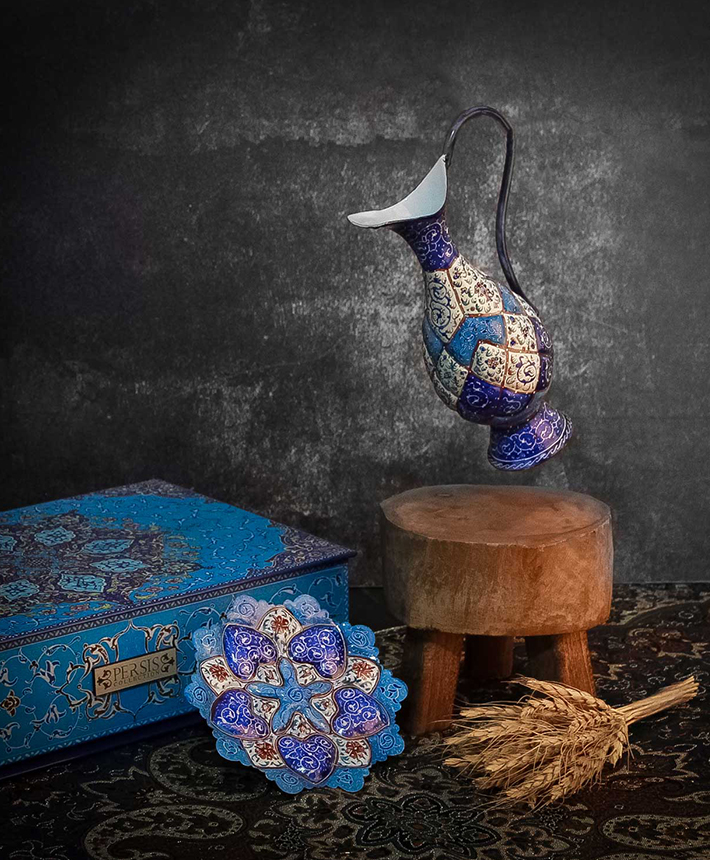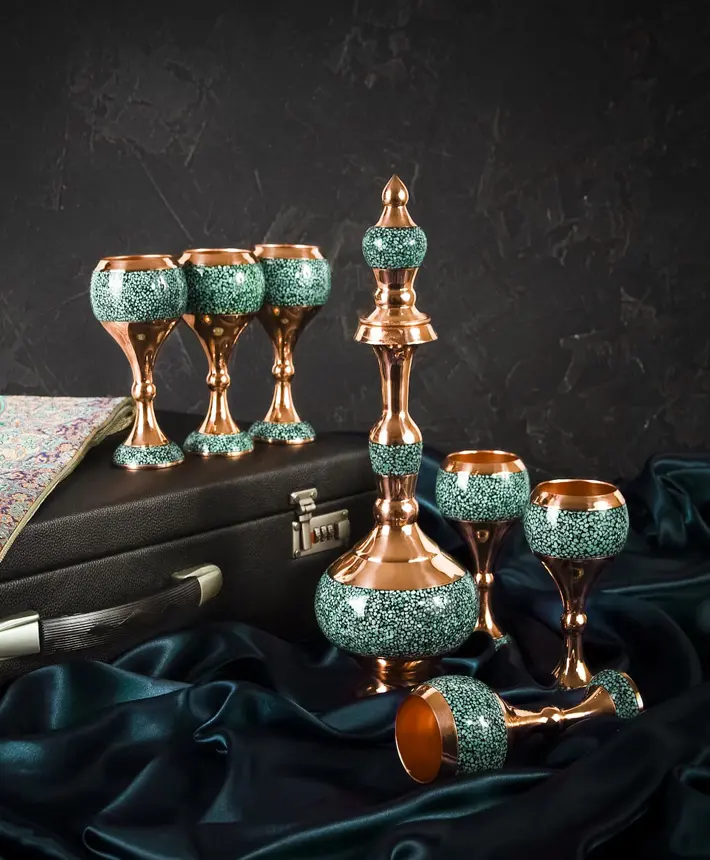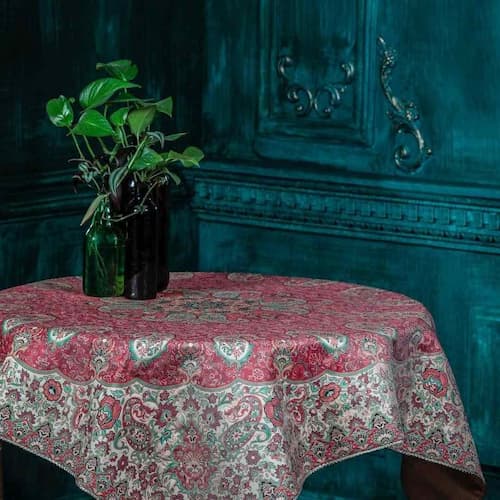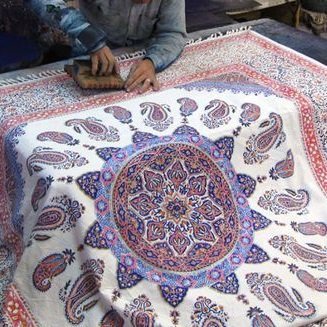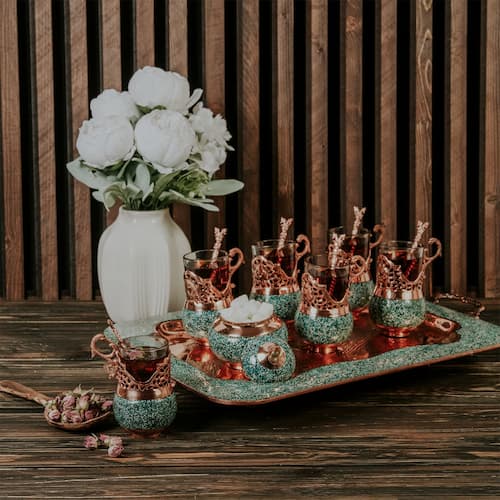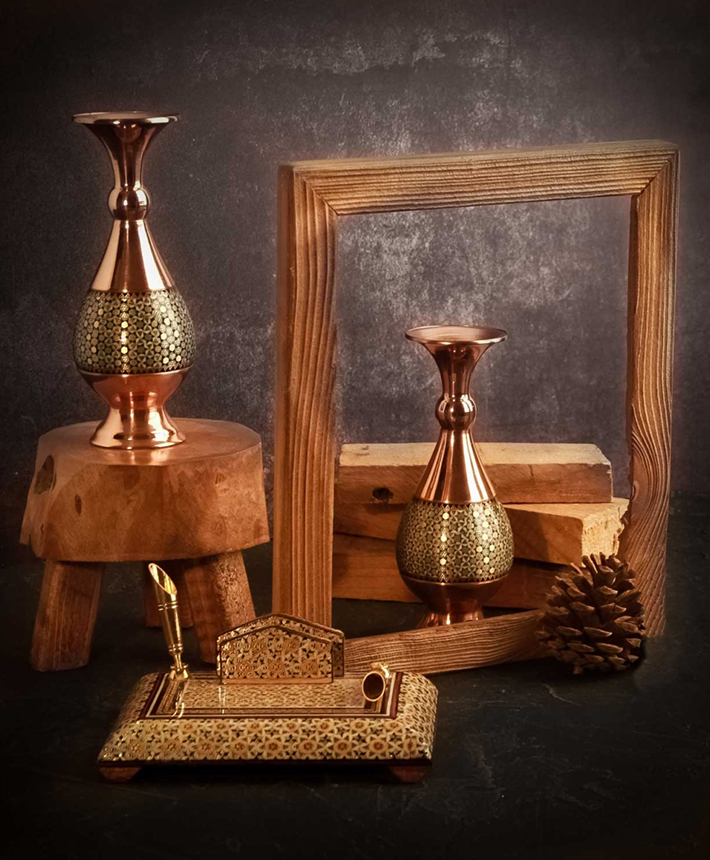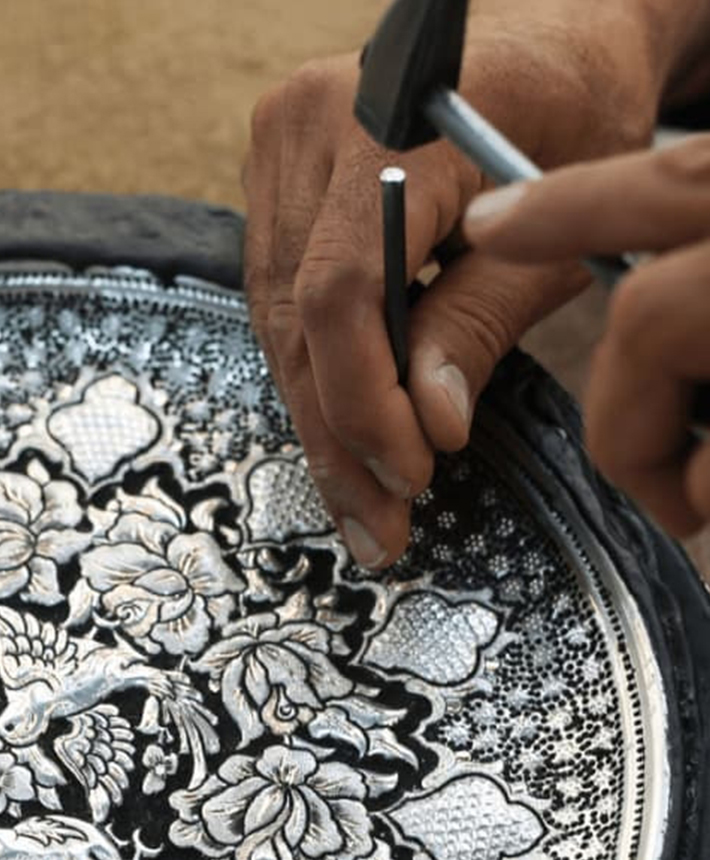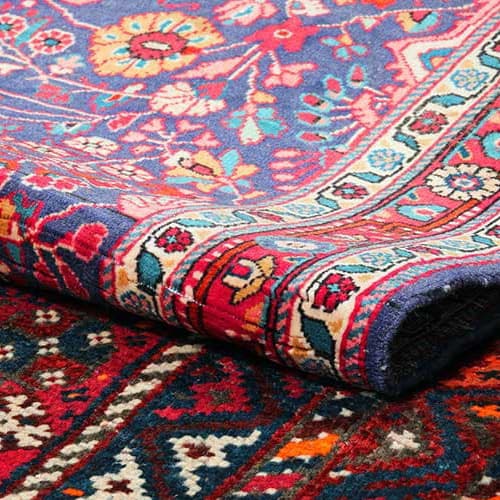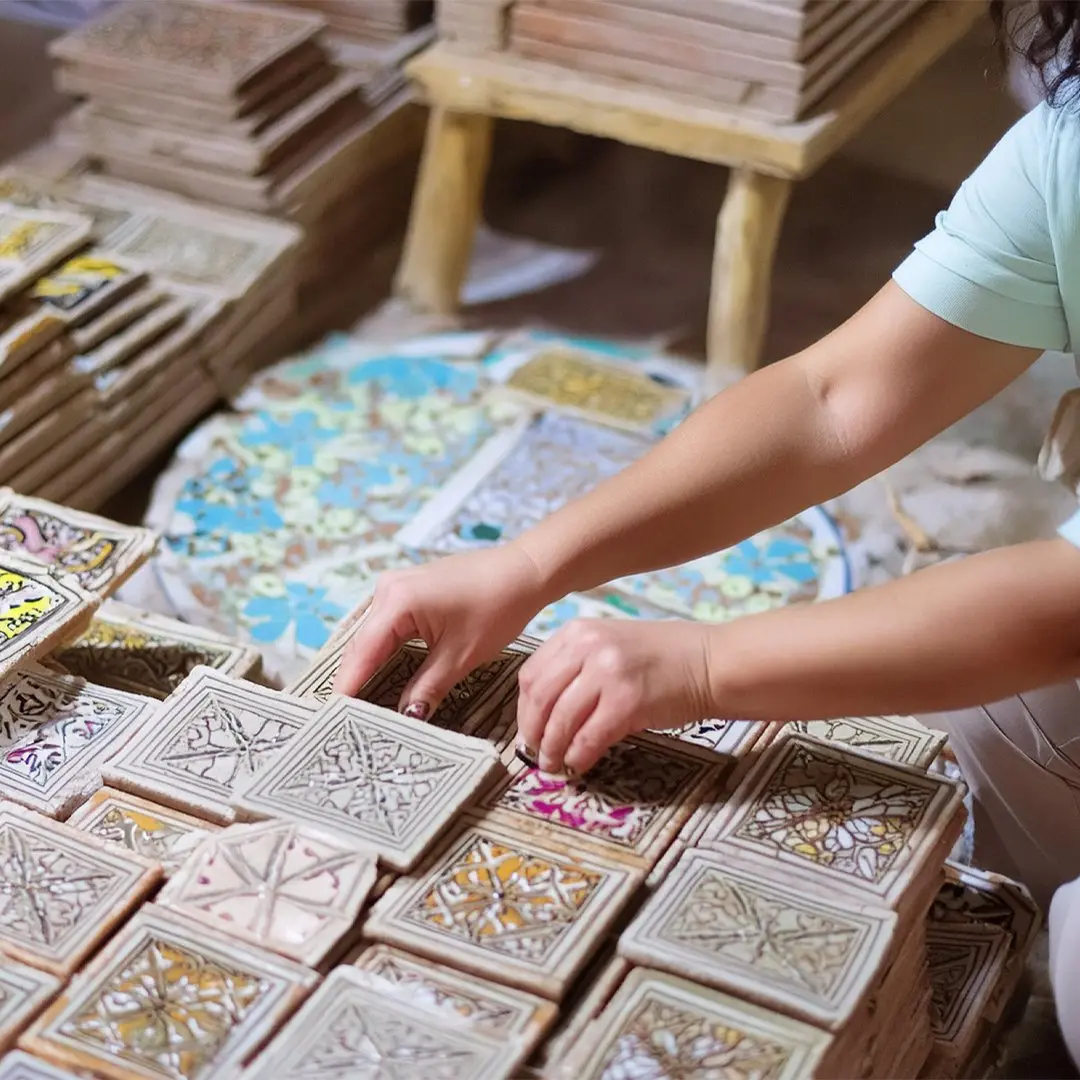The Rich Heritage of Persian Traditional Art
Persian Traditional Art is a reflection of Iran’s rich cultural heritage, encompassing a wide range of artistic expressions that have been passed down through generations. From ancient times to the modern era, these art forms have played a crucial role in Iranian society, serving as symbols of identity, spirituality, and national pride. The history of Persian art can be traced back to the Achaemenid Empire, with influences from various civilizations contributing to its development. Over time, this artistic heritage has evolved, yet it has retained its core principles, emphasizing beauty, precision, and symbolic meaning.
The prominence of ancient Persian art is evident in the grandeur of historical monuments and artifacts, where detailed craftsmanship and elaborate designs showcase the artistic mastery of the time. Persian Traditional Art includes a variety of forms, each with its unique techniques and materials, such as Persian Minakari, Persian Ghalamkari, Persian Ghalamzani, Persian Tiles, Persian Termeh weaving, Persian Firoozeh Koobi, and Persian Khatamkari. These art forms are not only admired for their aesthetic appeal but also for their cultural and historical significance.
The Evolution and Importance of Iranian Traditional Art
Iranian traditional art has evolved significantly, adapting to changes in society while maintaining its traditional essence. The types of Persian traditional art vary from intricate metalwork to delicate textile weaving, each representing a different aspect of Iranian culture. Popular Persian traditional art forms such as Ghalamkari (block printing) and Ghalamzani (metal engraving) are cherished for their detailed patterns and cultural relevance. These arts have been preserved and promoted through generations, ensuring that they remain an integral part of Iran’s traditional art and continue to influence contemporary Iranian art and culture.
Exploring Different Forms of Persian Traditional Art
Persian Minakari: The Enchantment of Enamelwork
Persian Minakari (میناکاری – Minākārī), also known as enamelwork, is one of the most revered forms of Persian traditional art. This craft involves the delicate application of colorful enamel onto metal surfaces, creating vibrant and intricate designs that are often used in decorative items, jewelry, and ceremonial objects. The process of Minakari requires precision and patience, as artisans carefully apply layers of enamel and fire the pieces multiple times to achieve the desired effect. This art form has a long history in Iran, with its roots in the Sassanian era, and it continues to be a symbol of Iranian craftsmanship and artistic expression.
Persian Ghalamkari: The Art of Block Printing
Persian Ghalamkari (قلمکاری – Qalamkārī) is an ancient textile art where traditional patterns are hand-printed onto fabric using wooden blocks and natural dyes. This method creates detailed and repeatable designs, often featuring floral and geometric motifs. Ghalamkari fabrics are widely used in Persian handicrafts, including tablecloths, curtains, and clothing. The art form is particularly popular in cities like Isfahan and Kashan, where artisans have honed their skills over centuries. Ghalamkari is not just a craft but a representation of Iran’s arts and crafts, showcasing the blend of art, culture, and tradition.
Persian Ghalamzani: The Intricate Craft of Metal Engraving
Persian Ghalamzani (قلمزنی – Qalamzani) is the art of metal engraving, where skilled artisans carve intricate patterns into metals such as copper, brass, and silver. This form of Persian traditional art is known for its detailed designs, which often depict scenes from Persian mythology, floral patterns, and Islamic calligraphy. Ghalamzani items are highly valued for their artistic and cultural significance, making them popular in Iranian traditional art. These pieces, whether decorative plates, vases, or jewelry, are not only beautiful but also carry the legacy of centuries-old craftsmanship.
Persian Tiles: A Symbol of Architectural Splendor
Persian Tiles (کاشیهای ایرانی – Kāshīhā-ye Irānī) are an essential component of Persian architecture, known for their vibrant colors and intricate designs. These tiles have been used in the decoration of mosques, palaces, and public buildings for centuries, symbolizing the grandeur of Persian traditional art. The patterns on these tiles often include geometric shapes, floral motifs, and arabesques, reflecting the deep cultural and spiritual meanings associated with Persian tile design. Today, Persian Tiles are appreciated for their aesthetic value and are used in both traditional and modern architectural projects.
The Enduring Legacy of Persian Handicrafts
Persian Termeh Weaving: Luxurious Fabric Art
Persian Termeh weaving (ترمه بافی – Termeh Bāfī) is a traditional textile art known for its luxurious fabrics adorned with intricate patterns. Woven from fine silk and wool, Termeh is a symbol of elegance and refinement in Iranian traditional art. The detailed designs, often featuring paisleys and floral motifs, are a testament to the skill and creativity of Iranian weavers. Termeh is used to create a variety of items, including garments, tablecloths, and curtains, and remains one of the most cherished forms of Persian traditional artwork.
Persian Firoozeh Koobi: The Art of Turquoise Inlay
Persian Firoozeh Koobi (فیروزه کوبی – Fīrūzeh Kūbī), or turquoise inlay, is a unique craft where small pieces of turquoise are meticulously set into metal surfaces, creating stunning decorative objects. This art form is deeply rooted in ancient Persian ceramics and metalwork, with its origins in cities like Isfahan. Firoozeh Koobi items, such as vases, jewelry, and decorative plates, are highly prized for their beauty and the skill required to create them. This craft represents the fusion of nature and artistry, making it a significant part of Persian traditional handicraft.
Persian Khatamkari: The Delicate Art of Inlay Work
Persian Khatamkari (خاتمکاری – Khātamkārī) is one of Iran’s most intricate and delicate crafts, involving the inlay of tiny pieces of wood, metal, and bone to create geometric patterns on various surfaces. This art form is predominantly practiced in cities like Isfahan and Shiraz and is a testament to the patience and precision of Iranian artisans. Khatamkari is used to decorate a wide range of objects, from jewelry boxes and picture frames to furniture and musical instruments. The complexity and beauty of Khatamkari make it a highly respected and valuable form of Iranian handicraft.
Perian Traditional Art FAQ:
- What is Persian Traditional Art?
Persian Traditional Art encompasses a variety of art forms, including enamelwork, tile-making, textile weaving, and metal engraving, all of which reflect Iran’s rich cultural heritage. - What are some famous types of Persian Traditional Art?
Famous types include Persian Minakari (enamelwork), Persian Ghalamkari (block printing), Persian Ghalamzani (metal engraving), Persian Tiles, and Persian Termeh weaving. - Where can I buy authentic Persian Traditional Art?
You can purchase authentic Persian Traditional Art at Persis Collection, where we offer a wide range of high-quality Iranian handicrafts. - What is the significance of Persian Tiles in Iranian art?
Persian Tiles are significant in Iranian art for their vibrant colors and intricate designs, commonly used in the decoration of mosques, palaces, and homes. - How is Persian Minakari created?
Persian Minakari involves applying layers of enamel onto metal surfaces and firing them at high temperatures to create colorful, intricate designs. - What makes Persian Termeh unique?
Persian Termeh is unique due to its luxurious fabric, woven with fine silk and wool, and adorned with intricate traditional patterns, making it a symbol of elegance. - How is Persian Ghalamkari made?
Persian Ghalamkari is made by hand-printing traditional patterns onto fabric using wooden blocks and natural dyes, creating detailed and repeatable designs. - What is Persian Khatamkari?
Persian Khatamkari is the art of inlay work, where tiny pieces of wood, metal, and bone are meticulously arranged to create geometric patterns on various objects. - How can I incorporate Persian Traditional Art into modern decor?
You can incorporate Persian Traditional Art into modern decor by using items like Persian tiles, Minakari plates, or Termeh textiles as focal points in your home. - Why should I choose Persian Traditional Art?
Choosing Persian Traditional Art allows you to bring a piece of Iran’s rich cultural heritage into your home, adding beauty, history, and authenticity to your space.







